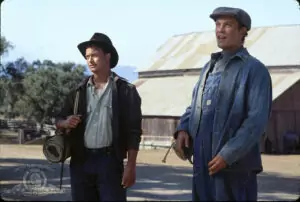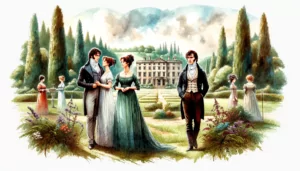Pepsi is a favored soda drink across the world, but it is also a multinational company known as PepsiCo that sells a variety of products. Though not as popular as Coca-Cola, Pepsi is still beloved by countless people. Most people drink Pepsi without looking at what is inside it, or knowing its history. In order to discover a piece of popular culture, this essay will delve into the history of Pepsi from its very beginning.

✅ AI Essay Writer ✅ AI Detector ✅ Plagchecker ✅ Paraphraser
✅ Summarizer ✅ Citation Generator
This famous soda drink was not always called “Pepsi,” as initially, it was named “Brad’s Drink” (The History of the Birthplace of Pepsi-Cola). The creator of “Brad’s Drink” was Caleb Bradham from New Bern, North Carolina. Bradham began selling his concoction at the drugstore he worked at in 1893. By 1898, it was no longer “Brad’s Drink” but “Pepsi-Cola” based on the ingredient kola nuts and the word “dyspepsia” which means indigestion. The original Pepsi-Cola also had vanilla and sugar (Soda Museum). The creation of the drink was made to help out with digestion and give energy (The History of the Birthplace of Pepsi-Cola).
In 1903, Bradham got more serious about his drink. He moved the production of his “Pepsi-Cola” to a warehouse. Initially, Bradham sold the syrup to people. In his first year of warehouse production, Bradham sold 7,968 gallons of syrup. In the following year, with so many gallons already sold, Bradham changed tactics and put out Pepsi-Cola in six-ounce bottles. It proved to be worth the change, and 19,848 gallons of the drink were sold that year. In 1909, Pepsi-Cola got its first endorsement by a celebrity. Famous automobile racer Barney Oldfield advertised Pepsi-Cola as a great drink to have before a race (Timetoast).
For two decades, the advertising theme for Pepsi-Cola was “Delicious and Healthful.” Up until 1931, in the Great depression, the drink sold well and consistently. But in light of the Great Depression, the company filed for bankruptcy. The explanation is that the sugar prices fluctuated during this time. Eventually, Roy C. Megargel purchased Pepsi’s trademark. Yet, Megargel soon had to give up his efforts, since his business practices were unsuccessful. President of Loft, Inc., Charles Guth, took the mantle instead. A candy manufacturer, Loft was using Coke soda fountains, but needed a substitute, as Coke would not provide a discount during the Great Depression. Therefore, Pepsi-Cola was employed in place of Coke, but with a changed formula (Soda Museum).
Though Loft was a successful company, it began to falter and neared bankruptcy as well. However, in 1936, with the introduction of the 12-ounce bottle of Pepsi-Cola, the company began to dig itself out of failure. Coke at the time was selling a 6.5-ounce bottle for five cents, and Pepsi-Cola was selling its drink for the same price for a 12-ounce bottle. This made many people switch preferences to Pepsi-Cola during the Great Depression (Twice as Much for a Nickel). Because of this campaign, the company’s profits doubled between 1936 and 1938 (Coca-Cola at Home).
After a legal battle for the ownership of Pepsi-Cola between the company Loft and Charles Guth, a new president of Pepsi-Cola, Walter Mack was appointed after Guth lost the court case. With Mack’s guiding hand, the company found its niche market: African-Americans. Mack noticed that other companies were not paying attention to the African-American market, and saw an opportunity to gain more profit by catering to this community. He gathered an all-African-African sales team of eventually 12 members. The advertisements for Pepsi-Cola showed African-Americans in a positive way, and even battled Coke through this avenue: by saying that Coke was racist. After these attacks on Coke and focusing on the African-American market, the Pepsi-Cola company was strong in the 1940s, and surged in 1950s in the era of Jim Crow (Martin, Douglas).
Besides Coke, Pepsi is still the biggest player in the soda market. From its growth in the 1950s, Pepsi has been a prominent company worldwide. However, soda sales are now declining with consumers wanting healthier drinks. How long will Pepsi, and drinks like it, be around? Only time will tell.
References
The History of the Birthplace of Pepsi-Cola. Pepsistore.com.
“The History of Pepsi Cola.” Archived from the original on April 15, 2001. Soda Museum.
“The Company of Pepsi Timeline.” Timetoast, www.timetoast.com/timelines/the-company-of-pepsi.
1939 Radio Commercial (Twice as Much for a Nickel). Archived from the original on June 15, 2007.
Coca-Cola at Home, xroads.virginia.edu/~class/coke/coke1.html.
Martin, Douglas (May 6, 2007). “Edward F. Boyd Dies at 92; Marketed Pepsi to Blacks.” The New York Times.
Follow us on Reddit for more insights and updates.





Comments (0)
Welcome to A*Help comments!
We’re all about debate and discussion at A*Help.
We value the diverse opinions of users, so you may find points of view that you don’t agree with. And that’s cool. However, there are certain things we’re not OK with: attempts to manipulate our data in any way, for example, or the posting of discriminative, offensive, hateful, or disparaging material.